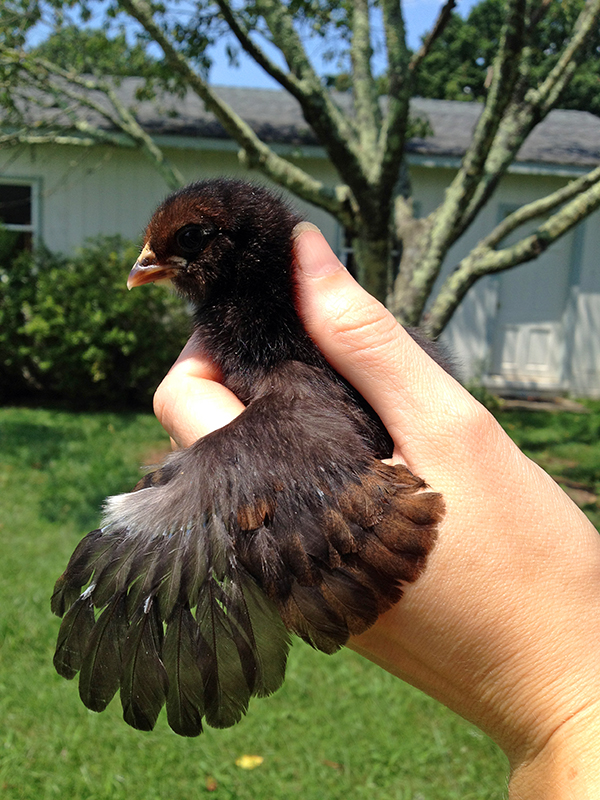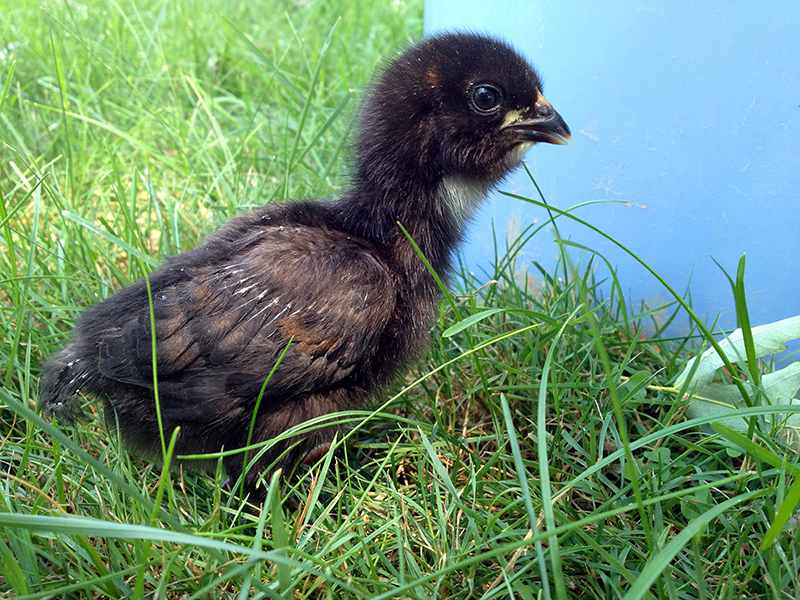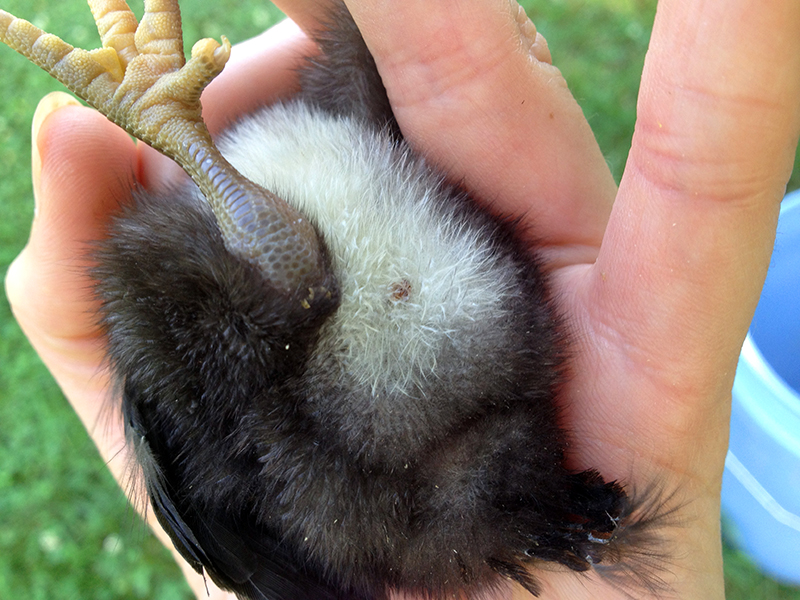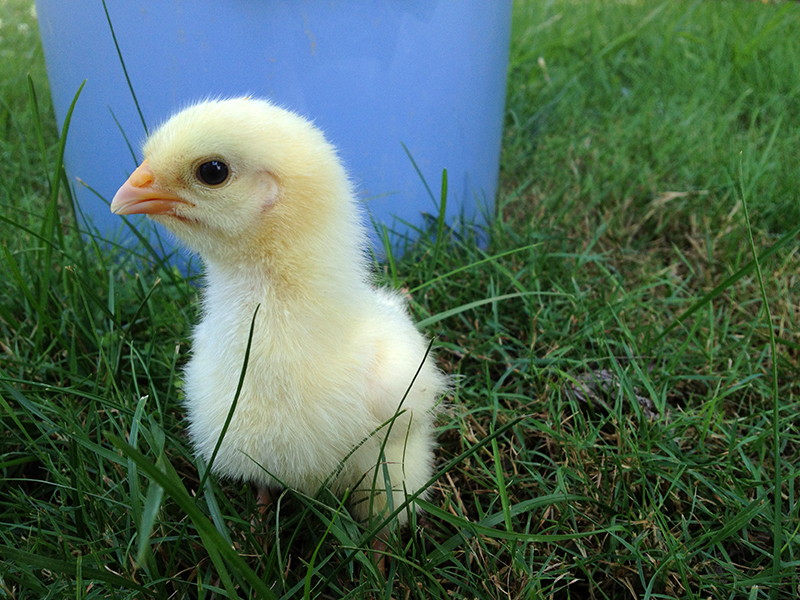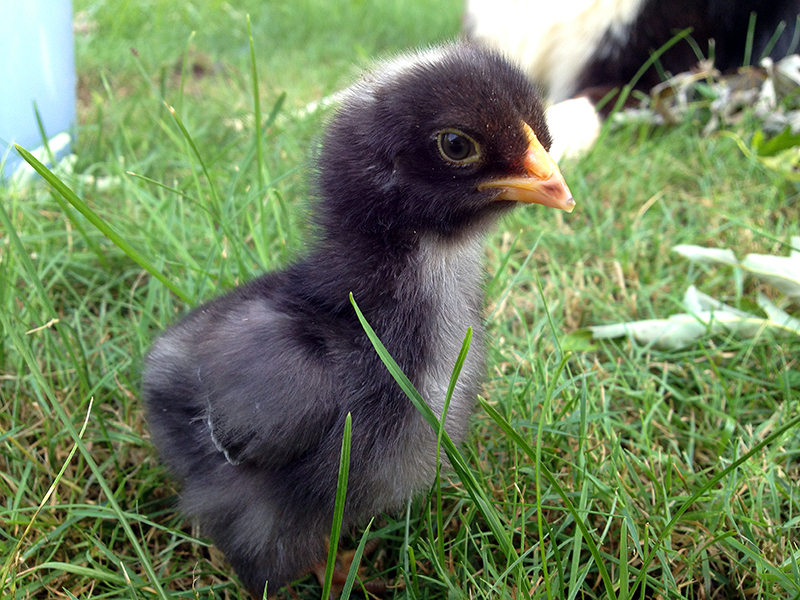Enough of bloody flock power struggles. Let’s talk about the happy family living in the broody coop in the garage. Dahlia is a very calm and patient mother, and protective. She flew out of the coop last night when I took one of her chicks out to hold and she heard its distress cries. She’s doing a great job with her six chicks. They’re growing and changing by the day, and are already feathering out. It’s exciting to see a lot of copper brown in the new feathers of the black olive-egger chicks.
I am not sure if they will be any indication of the final coloration of the birds as adults, as coloration changes each time the chick molts. But it would be neat to have some brown hens—I don’t have any in the flock now.
Some of the chicks still have their dried up umbilical cords attached. I never knew birds had umbilical cords until I saw them on the guineas that Iris hatched out last summer.
Here’s the sole Coronation Sussex chick. My $20 chicken (six hatching eggs cost $20, and this is the only bird I got out of them). Thankfully these birds are rare enough around here that if it’s a cockerel I should be able to sell him for at least $20.
This is Griz, the only chick out of my barred olive egger Oregano and the chick whose egg survived car trips and refrigeration at my brother’s house. I let my brother name the chick. He picked Grizabella, but when the chick was born a boy the name got shortened to something more masculine. The white barring is just starting to show on his wing tips, and he’s got a bit of copper color to his head (which makes me think this coloration traveled in on my Wheaten Ameraucana rooster’s genes, as the black chicks have it too). But who knows!!? The neatest thing about making these breed crosses is seeing what they turn out to look like.

